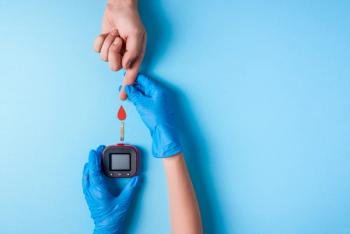
Current TRD Treatment Model: Part 1
The panelists provide an overview of the treatment model for treating patients with treatment-resistant depression.
Episodes in this series

Megan Maroney, PharmD, BCPP: Dr Thase a little earlier talked about the cost of medications. Mr Cannon, how do payers set up treatment models for patients with TRD [treatment-resistant depression]? Are there step edits or prior authorizations for treatment available?
Eric Cannon, PharmD, FAMCP: I don’t know if you want me setting up a treatment model for just about anything. As a payer, we try to collaborate with physicians in a way that allows patients to have access to appropriate treatments. How do we make them readily available? If you look at the treatment model that exists around depression and behavioral health, suicide rates continue to go up. We continue to have access issues around behavioral health. As we look at all the implications of that, our goal hasn’t been to restrict access to treatment.
How do we provide broader access to treatment, and how do we do it in a unified way? Within my team, I have a pharmacist who sits on a large behavioral health team within Intermountain Healthcare. He brings the payer perspective, and there are physicians that bring their perspective. We work together and come to an agreement. This is how we believe it would be best implemented. Part of that may involve step edits. You’ve got expensive new treatments. You’ve got brexpiprazole. You’ve got Ubrelvy [ubrogepant]. You’ve got new treatments that have come out. The question is, where do they fall? Within the claim system, we might say we’re going to look for only 2 different antidepressants. If they’ve had in the last 12 months, that can be processed. Our goal is to get patients on treatment and keep them on treatment. The cost of the drugs is minimal in terms of the societal costs and the health care costs, and the economics of that come as a result of depression.
Megan Maroney, PharmD, BCPP: We’ll talk more about that in the next segment for sure. Dr Skolnik, what outcome measures or tools do you use to evaluate the effectiveness of treatment for patients? We talked a little about this before. What do you consider for the patient if they haven’t responded?
Neil Skolnik, MD: The outcome tool that we use in the office—we did talk about it before—is the PHQ-9 [Patient Health Questionaire-9] because it’s easy and reasonably accurate. It allows us to have an objective measure of how a patient is doing. As I said, I’m not convinced that it’s a lot better than taking a good history initially in terms of gauging severity and need for treatment. I’m convinced that it’s much better in terms of gauging how a patient is doing. Are they responding? Are they partially responding? Neither the patient nor I can remember how they were doing even a month ago, never mind 6 months ago. It gives an objective way to keep track of whether the medicine or therapy is working. How well is it working? Is it continuing to work? Are they sliding back down? It has its biggest value in ongoing monitoring.
Megan Maroney, PharmD, BCPP: Along with that response to treatment, how long do you give a medication before deeming it ineffective?
Neil Skolnik, MD: My understanding is that you’re supposed to give 8 to 12 weeks. But patients struggle. If there’s no response at all in 4 to 6 weeks, I’ll often try something different. If there’s room to go up on the dose, I might go up. But if a patient is beginning to respond and you’re seeing some movement, then I continue them on therapy look at that full 8 to 12 weeks to see if there’s a response? Michael, what’s your sense about what the literature says?
Michael Edward Thase, MD: You’re practicing with good sense. If something hasn’t worked by 6 or 8 weeks, it’s a mistake to go another 4 weeks longer. But if they’re 50% or 60% better at 6 weeks, you’ll want another 4 to 6 weeks to see how that response continues to evolve. Does this patient need a second treatment added to get completely better, or are they going to get completely better with a little additional time. Interestingly, even folks who make no improvement during the first 2 weeks of treatment are less likely to respond than those who make some improvements. If you can set your practice up with PHQ-9s coming in on an every-2-week basis, for example, you can recommend a dose increase at 2 weeks. If their original score was 18 and now they’re 17, they’re likely going to need something more than what they have. This is a way we can provide more efficient care. The fewer days you spend depressed, the more productive you’ll be at work, the happier your family will be, and the better your brain health will be across your life.
Eric Cannon, PharmD, FAMCP: Michael, you talked about doing the evaluation every 2 weeks. Are you sending out the PHQ-9? Is that through email? How do you approach that with your patients? Are you having them come in every 2 weeks?
Michael Edward Thase, MD: In my system, which isn’t designed by someone brilliant at these things, I send them a fillable form of the PHQ-9 and ask them to send it back by email. Penn Medicine has a platform on which you can do the PHQ-9 and send it directly to your doctor. In a busy primary care office, you may have an office assistant sending these out every 2 weeks.
Transcript edited for clarity.
Newsletter
Pharmacy practice is always changing. Stay ahead of the curve with the Drug Topics newsletter and get the latest drug information, industry trends, and patient care tips.



























































































































